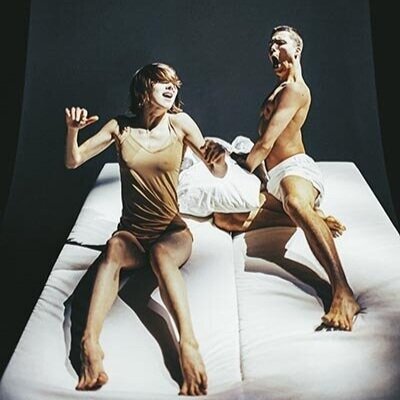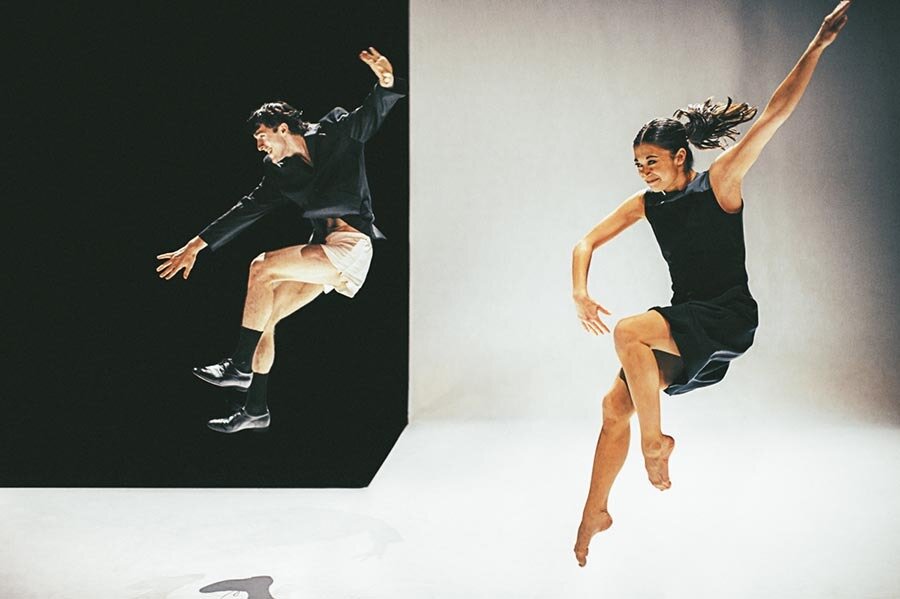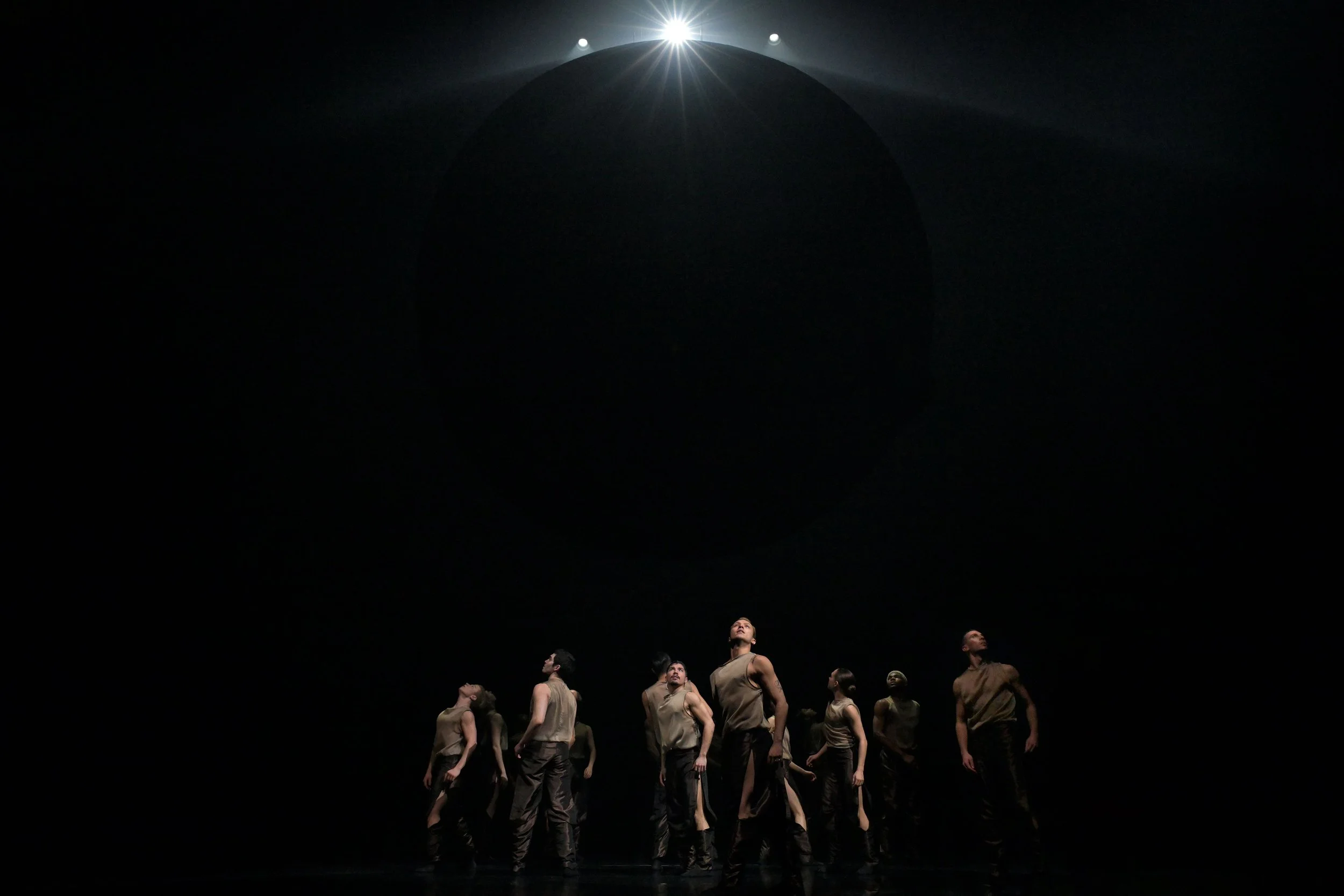Dance review: NDT2's strange and innovative Dare to Say moves playfully through our bizarre times
Glitching dancers, anti-romantic pas de deux, and a vivid gamut of relationships make DanceHouse’s livestream a rare gift during isolation
Nederlands Dans Theater’s Four Relations. Photo by Rahi Rezvani
DanceHouse streams NDT2’s Dare to Say until November 8
THE MANY SURREAL moments in Nederlands Dans Theater’s livestream go beyond the inventive and deeply affecting contemporary dance works.
To open the program called Dare to Say, artistic director Emily Molnar steps onstage to greet the audience before the show, and there’s a weird second of disconnect--a temporary warp in the time and space continuum. For years, we’ve witnessed similar greetings from her on the Queen Elizabeth Theatre stage, before the openings of Ballet BC, where she was until last spring the artistic director. It takes a few minutes to process the fact that she is onscreen, and that the black curtain behind her does not sit on Hamilton Street but is being beamed to us from the Hague, in the Netherlands, where she now heads one of the world’s most cutting-edge companies. The fact that her voice is echoing into an almost-empty auditorium heightens the otherworldly sensation.
Similar dreamlike scenarios unfold in the two works that follow her welcome--each of them speaking eloquently, innovatively, and playfully to our feelings of disconnection in pandemic times.
The program is a double bill of two up-and-coming European choreographers who Vancouverites might not otherwise get the chance to see: Bulgarian Dimo Milev and Swede Alexander Ekman. Both had to create these pieces within social-distancing constraints, but these are works where those restrictions are blissfully invisible. Their visions are performed by NDT2, the younger division of the Hague-based company.
Milev’s strange and spellbinding Fusions and some confusions opens to the sight of two male dancers wearing suits; they’re jerking around a central, dimly lit platform. The men appear more like glitching holograms than humans as they negotiate the space. Occasionally they’ll pop a hand or foot into the spotlight, finding a new way to move gracefully from the dark. Setting his work to the groaning cello, plucking strings, and echoing piano of composer Miguelangel Clerc Parada, Milev goes on to play these ideas of avatar-like, dehumanized movement against fluid form. Amid it all, dissociated beings try awkwardly to connect.
A hallucinatory moment in Fusions and some confusions. Photo by Joris Jan Bos
Arts Umbrella-trained Sophie Whittome proves herself a magnetic presence in an odd and riveting pas de deux with France’s Auguste Palayer, her gaze literally seeming to pull him around the stage floor at one point. Liquid spines curl backward and shoulders seem to roll out of their sockets as the pliable duo defies physics and anatomy in a piece where they’re finding themselves as much as each other.
In the final, hallucinatory act, Milev allows his dancers to strip off their suits to reveal blue bodysuits that magically free them to move fluidly. Just wait till you see the dancer who’s stuck with half blue-leotard legs and a suit-and-shirt top, his lower limbs gushing out of control while his upper body stays constrained.
Ekman’s Four Relations is equally playful, exploring similar themes of finding light amid dark in the least literal or earnest way possible.
In the process, his idiosyncratic work manages to capture just about every different colour of human relationships. It culminates in an ending so upliftingly moving it could bring stressed-out quarantiners to tears.
The work begins imaginatively with four pairs holding each other, circling musicbox-like on revolving black platforms. From there they step off to perform four duets. A string quartet plays live on one side of the stage, sometimes accompanied by voice-over text.
Two of the dancers unleash a wild and joyful number, kicking up their heels; sometimes she stops to tussle his hair or laugh out loud. But all that shifts when… Well, let’s just say a baby drops out of the sky.
Other highlights amid the pas de deux include two performers shot from above, rolling around a bed through a voice-over that describes a wild dream. Two men perform a Chaplinesque dance behind a dinner table. And here are dynamic duo Whittome and Palayer again, pulling off another bravura duet--a wonderfully anti-romantic pairing that’s mostly danced on two side-by-side chairs. They find a bizarre kind of connection mixed with antagonism, in one sequence almost literally pushing each other’s buttons: her foot jackhammers his neck up and down while he’s on all fours, or he pokes his finger repeatedly into her chest, jolting her like he’s a human defibrillator. It’s funny and probably all-too-familiar for any couple who’s been locked up together for the past eight months or so. (You know who you are.)
This is work that is so strong and speaks so surprisingly to this moment, that it’s sad that it can’t meet live applause--or just that of the dancers and the instrumentalists congratulating each other. But the show is a gift to Vancouver dance fans who might have always dreamed of flying to the Nederlands to take in the top-flight company. Ironically, it takes a flight ban to get you to a live performance at the Hague.
The uplifting opening duet in Four Relations. Photo by Rahi Rezvani
















